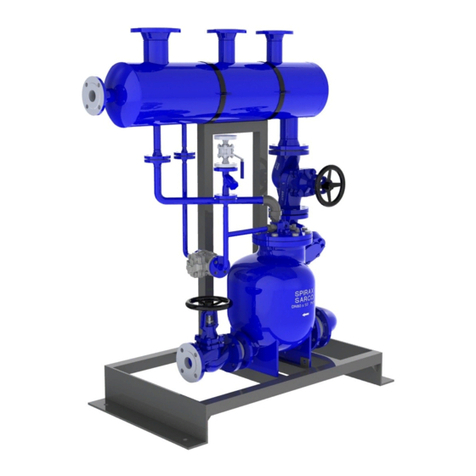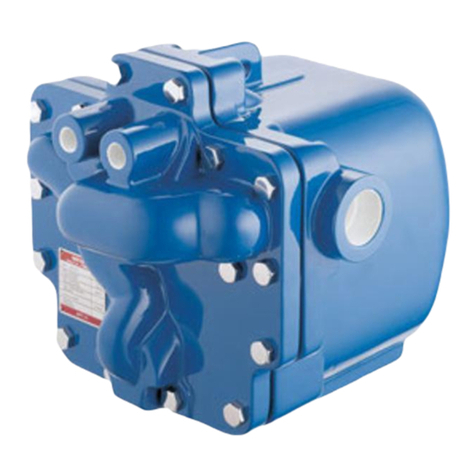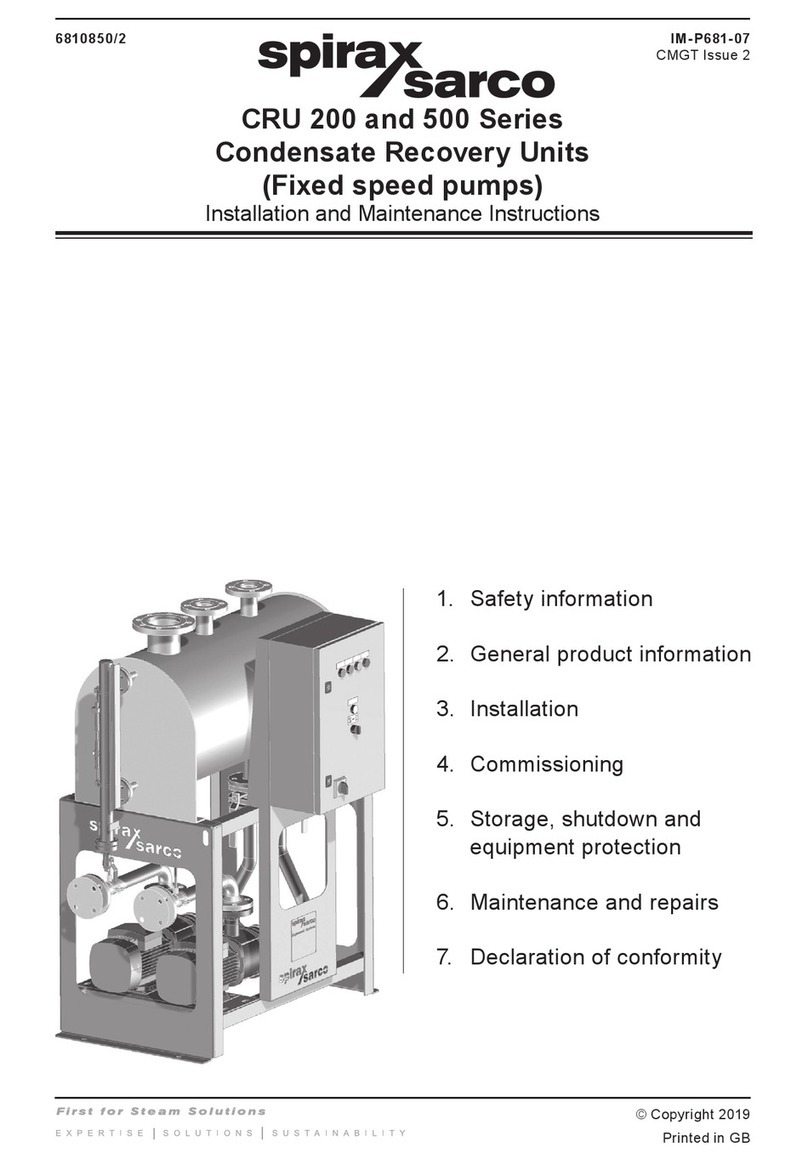IM-P612-18 ST Issue 3
8
Important - safety note
Before any installation or maintenance procedure, always ensure that all steam or
condensate lines are isolated.
Ensure any residual internal pressure in the product or connecting lines is carefully
relieved. Also ensure any hot parts have cooled to prevent risk of injury from burns. Always
wear appropriate safety clothing before carrying out any installation or maintenance work.
Always use suitable lifting gear and ensure the product is safely secured.
3.1 Inlet piping
To prevent condensate backing up into the equipment being drained, it is recommended that the
inlet pipework is sufficiently sized to accumulate condensate during the pump’s discharge cycle.
Generally a length and diameter of pipe to accommodate 2 litres of condensate will be sufficient.
Itisrecommendedthiscondensatereservoirissituatedatleast1pipediameterbelowtheprocess
outlet but as high as possible above the APT10-2 inlet. It is essential that a Spirax Sarco Y-type
strainer with a maximum 0.8 mm perforation screen size is fitted at the condensate inlet of the
APT10-2, as shown in Fig. 5.
3.2 Recommended installation head
An installation head of at least 0.3 m (12 ins) from the base of the unit is recommended. Minimum
0.2m(8ins)withreducedcapacity.Note:Duringcoldstart-upconditions,itispossibleforhydraulic
pulsingoftheinletcheckvalvetooccur.Itisadvisableinthiscasetoinstallathrottlingisolationvalve
to reduce the filling pressure.
3.3 Connections (refer to installation diagram Fig. 4 opposite)
The APT10-2 has four connection ports. The DN20 (¾") port marked (IN) should be connected to
theoutletoftheequipmentbeingdrained.TheDN20(¾")portmarked(OUT)shouldbeconnected
to the condensate return line. A flow arrow indicates the correct direction of flow. The DN15 (½")
port marked (S) - steam should be connected to a trapped motive steam supply. * It is important
toensure thislineisdrained of condensateatall times usingaSpirax Sarco steamtrapand
filteredusing a 100 mesh strainer. ThescrewedDN15(½")port marked(E)-exhaustshouldbe
balanced back as close as possible to the condensate outlet of the equipment. This balance line
must always be connected to the top of the condensate pipe; as shown in Fig. 5.
Note: The APT10-2 can be secured to a level stable surface using the 2 x Ø12 mm holes drilled
into the base of the cover.
3.4 Outlet piping
It is important for the outlet piping to be correctly sized to prevent excessive back pressure on the
APT10-2.This pipeworkshould be sizedto takeinto accountthe effects offlash steamat theheat
exchangersfullloadoperatingconditions.RefertoTR-GCM-05forSpiraxSarco'smethodofsizing
this pipe.
3. Installation
4. Commissioning
4.1 After ensuring the inlet and outlet pipe connections and steam motive/exhaust connections
arecoupledinaccordancewithFig.4/5,slowlyopenthemotivesteaminletlinetosupplypressure
to the APT10-2. Ensure the exhaust /balance line is open and not restricted in any way.
4.2 Slowly open the isolation valves in the condensate inlet and discharge lines, allowing
condensate to fill the body of the APT10-2.
4.3 The APT10-2 is now ready to operate.
4.4 When the process plant is operational, the APT10-2 will discharge condensate under all
pressure conditions into the return line.
4.4 Ifanyirregularitiesareobserved,rechecktheinstallationaccordingtotherecommendations.
If the unit fails to operate, then consult the fault finding guide Section 9.






























